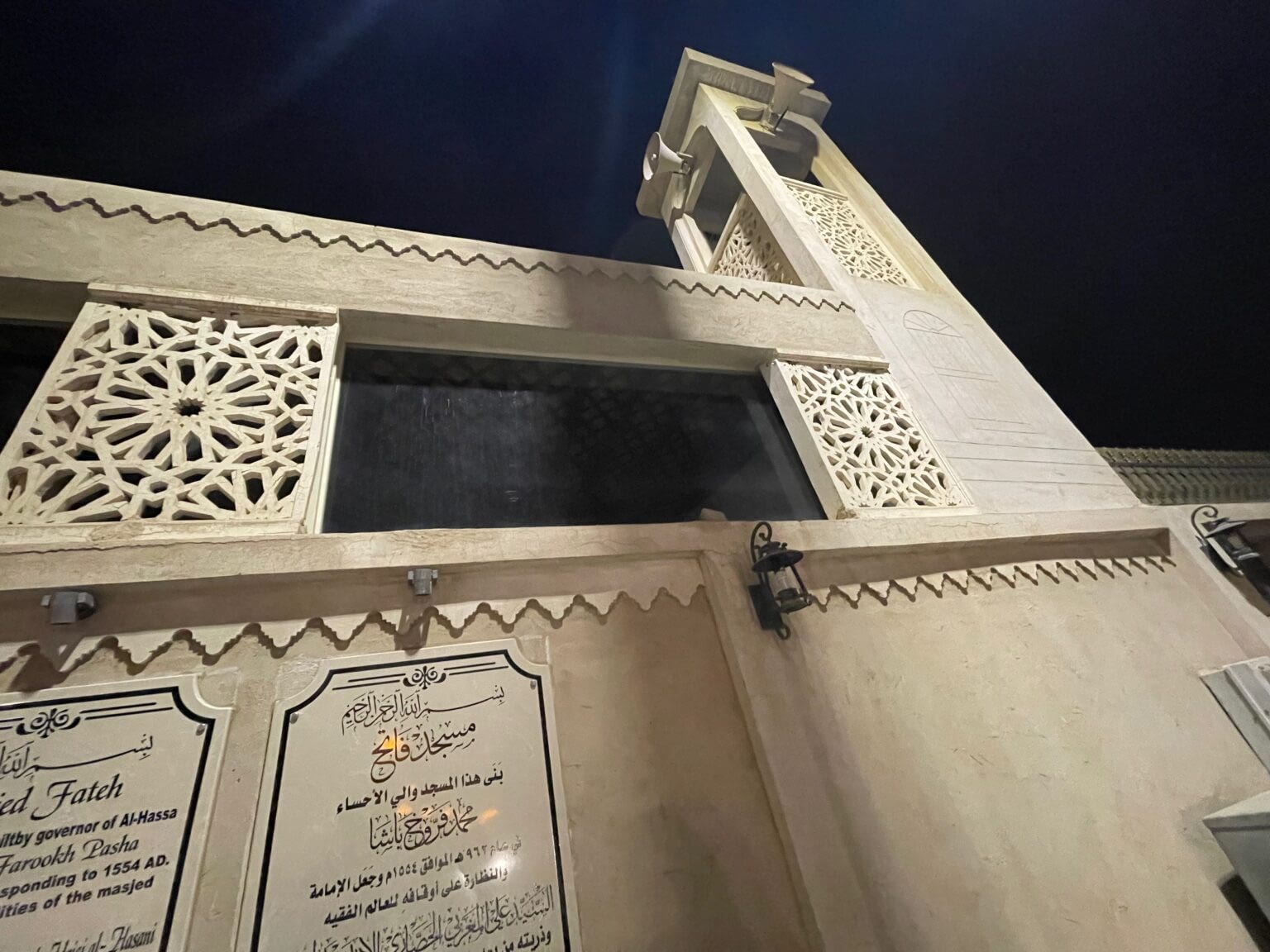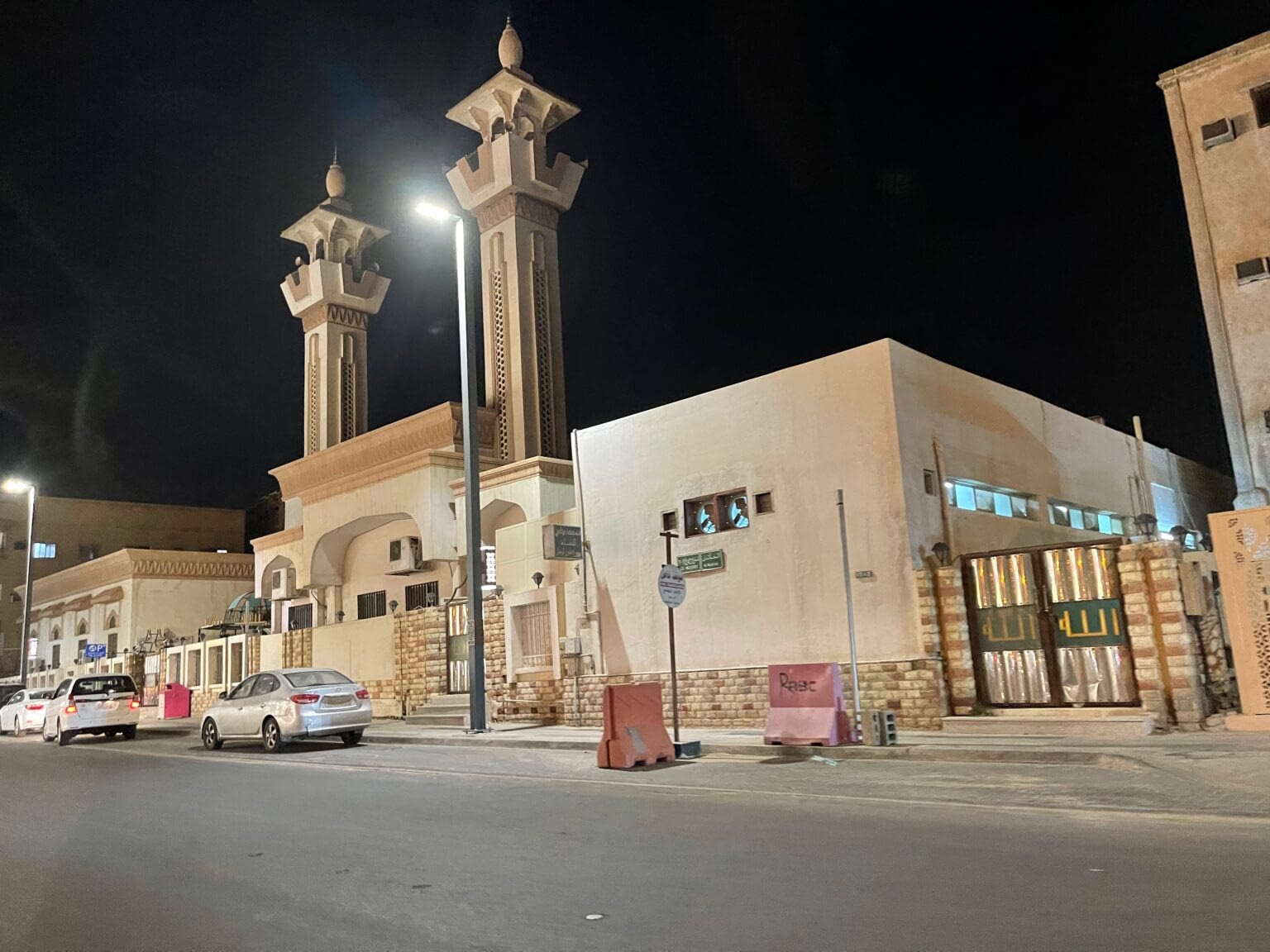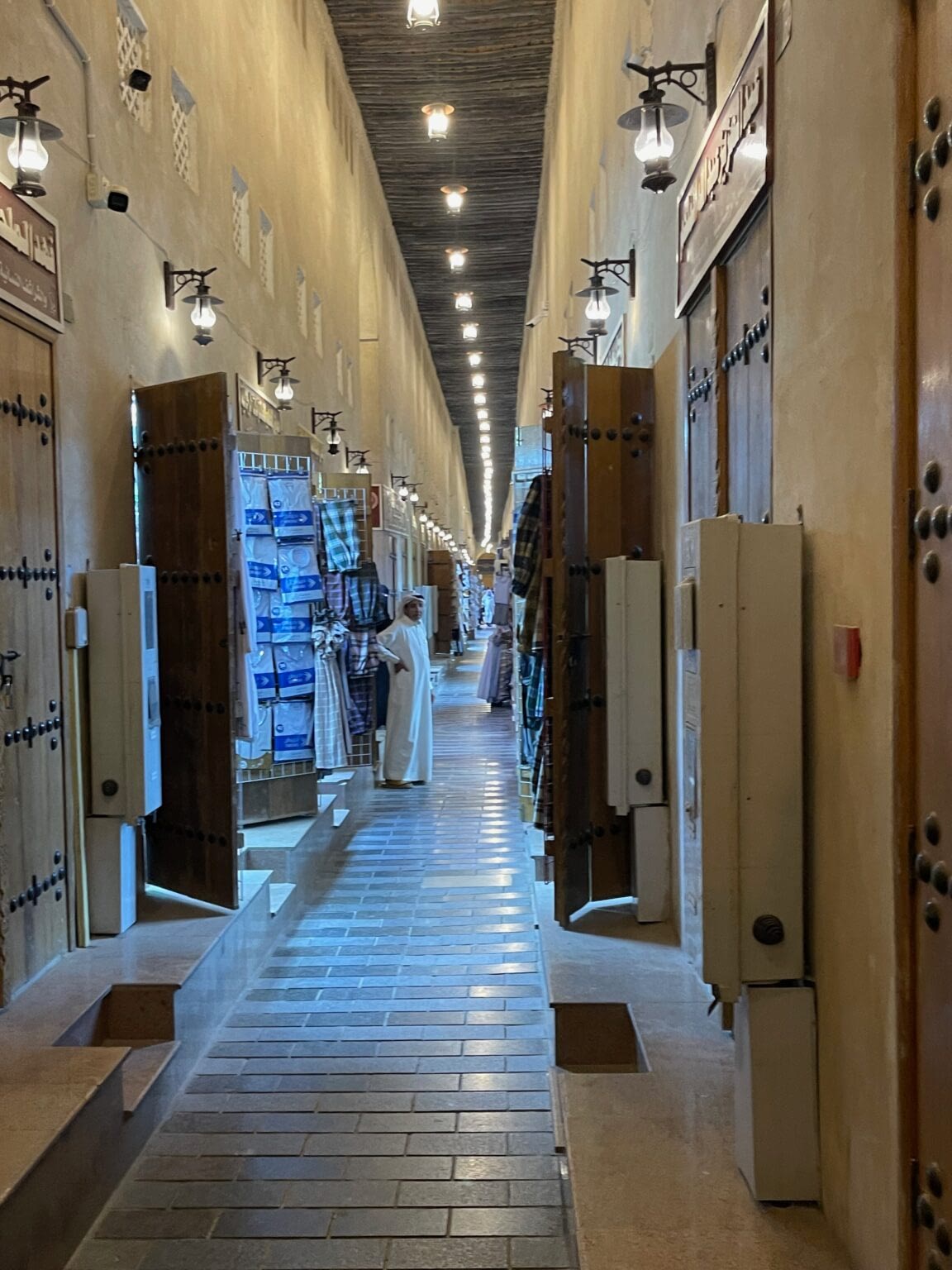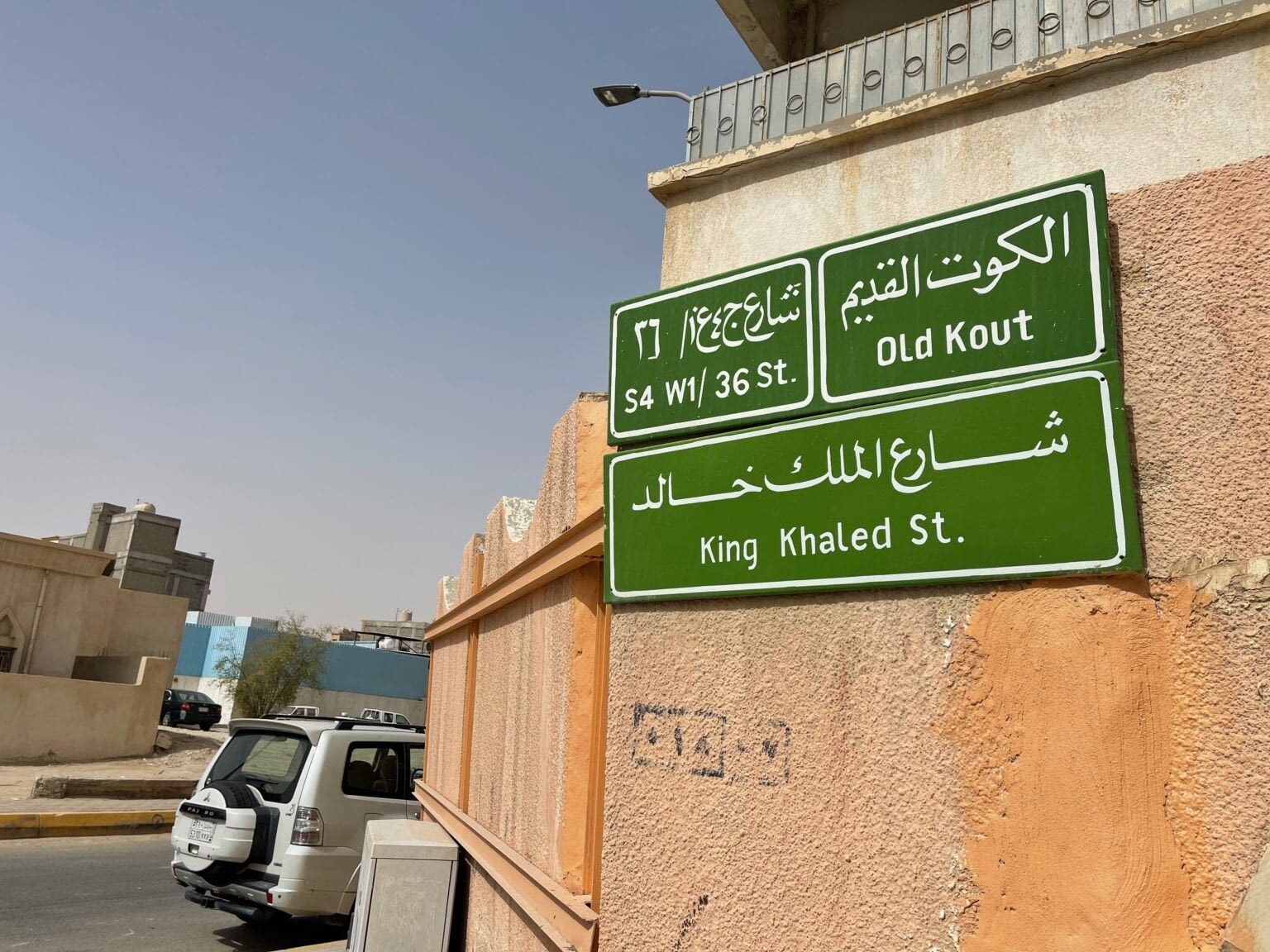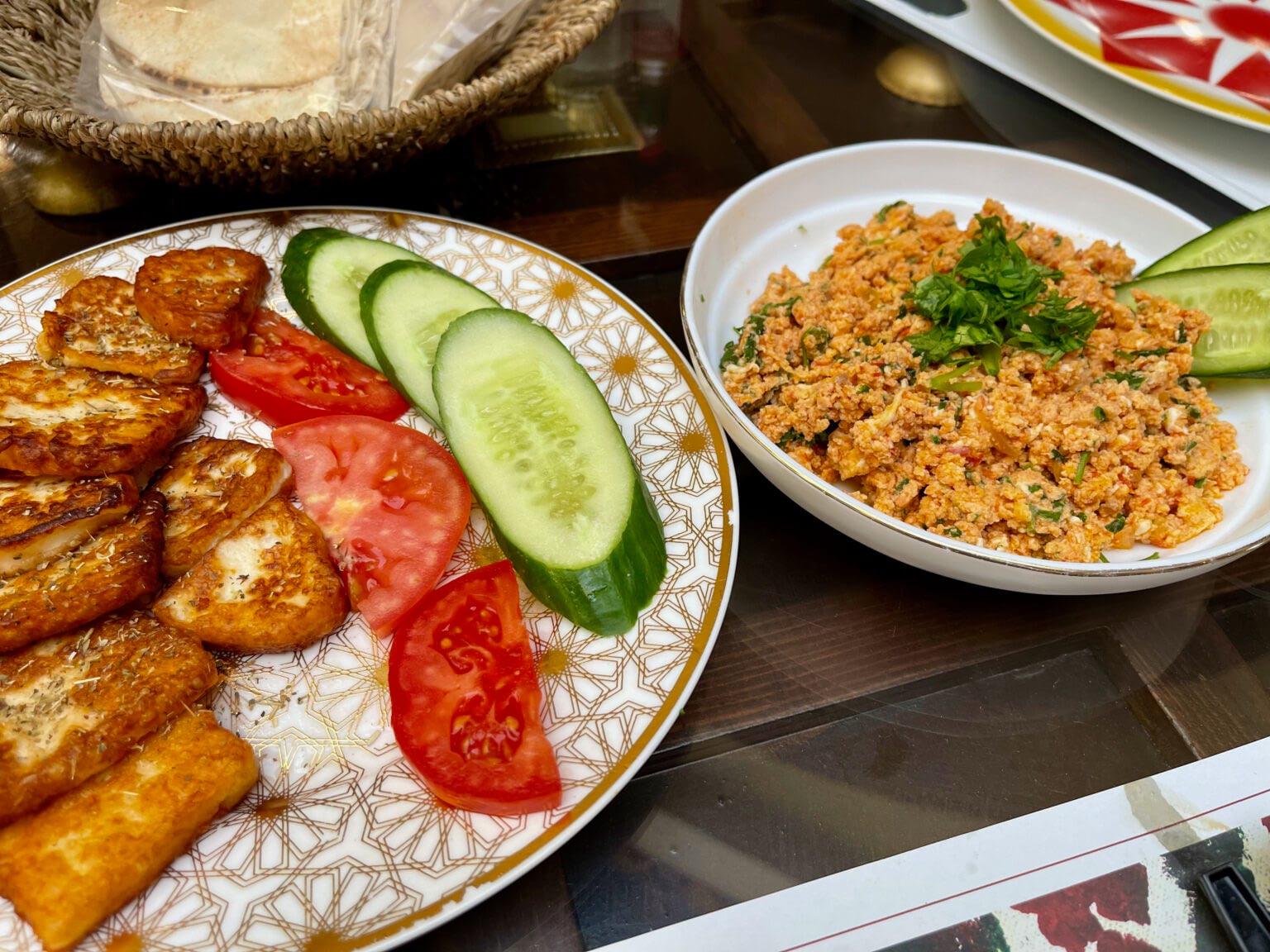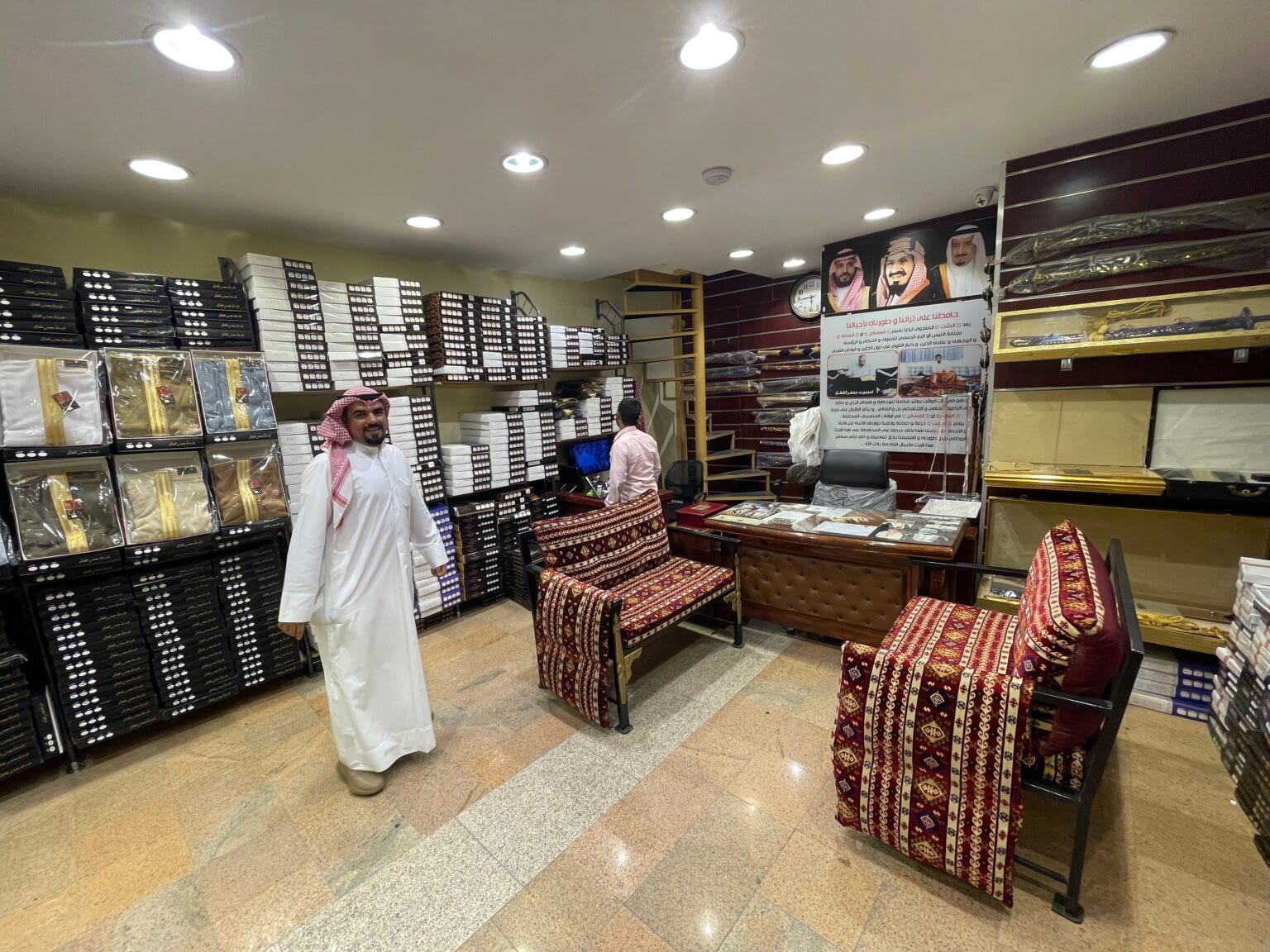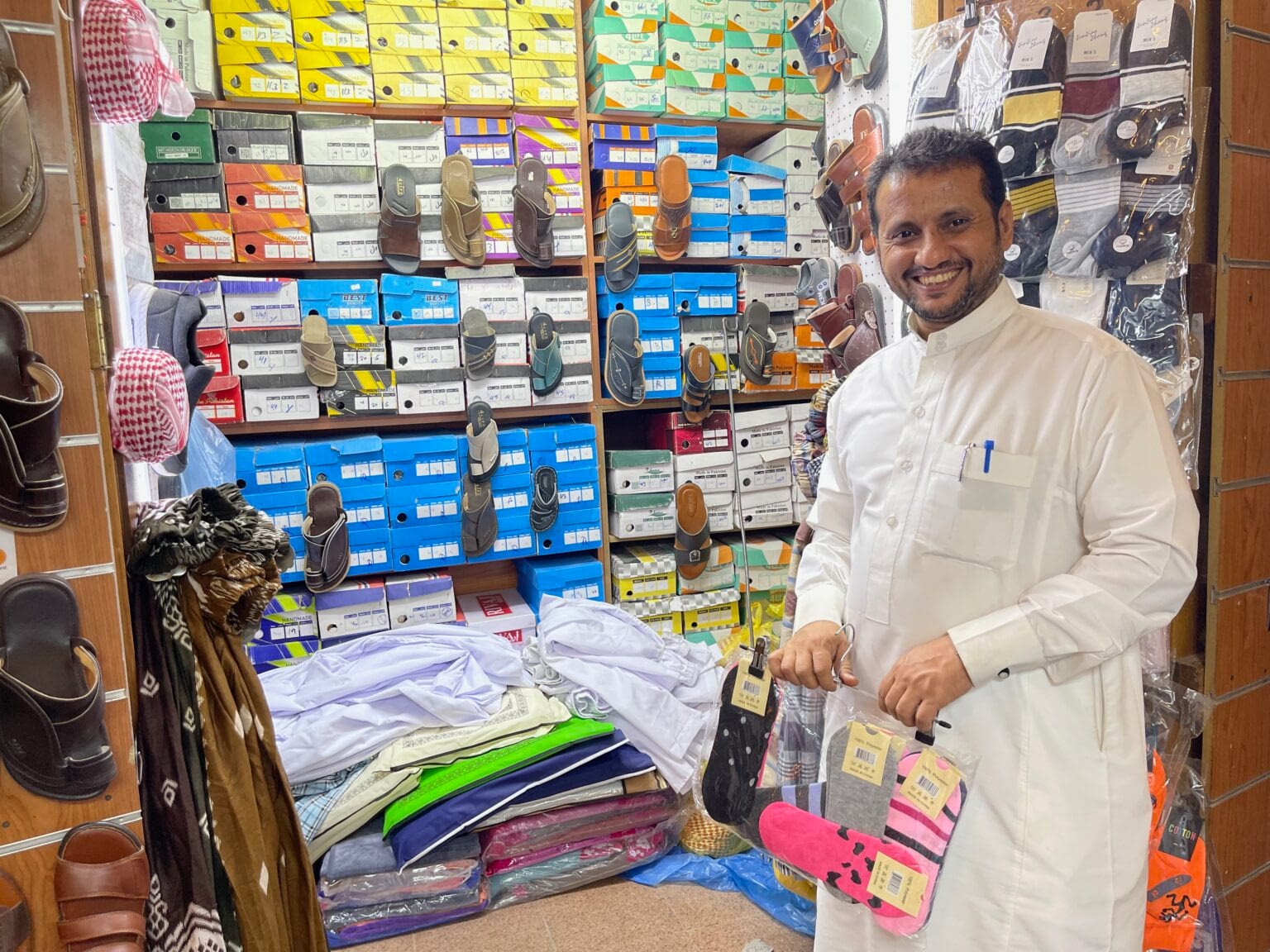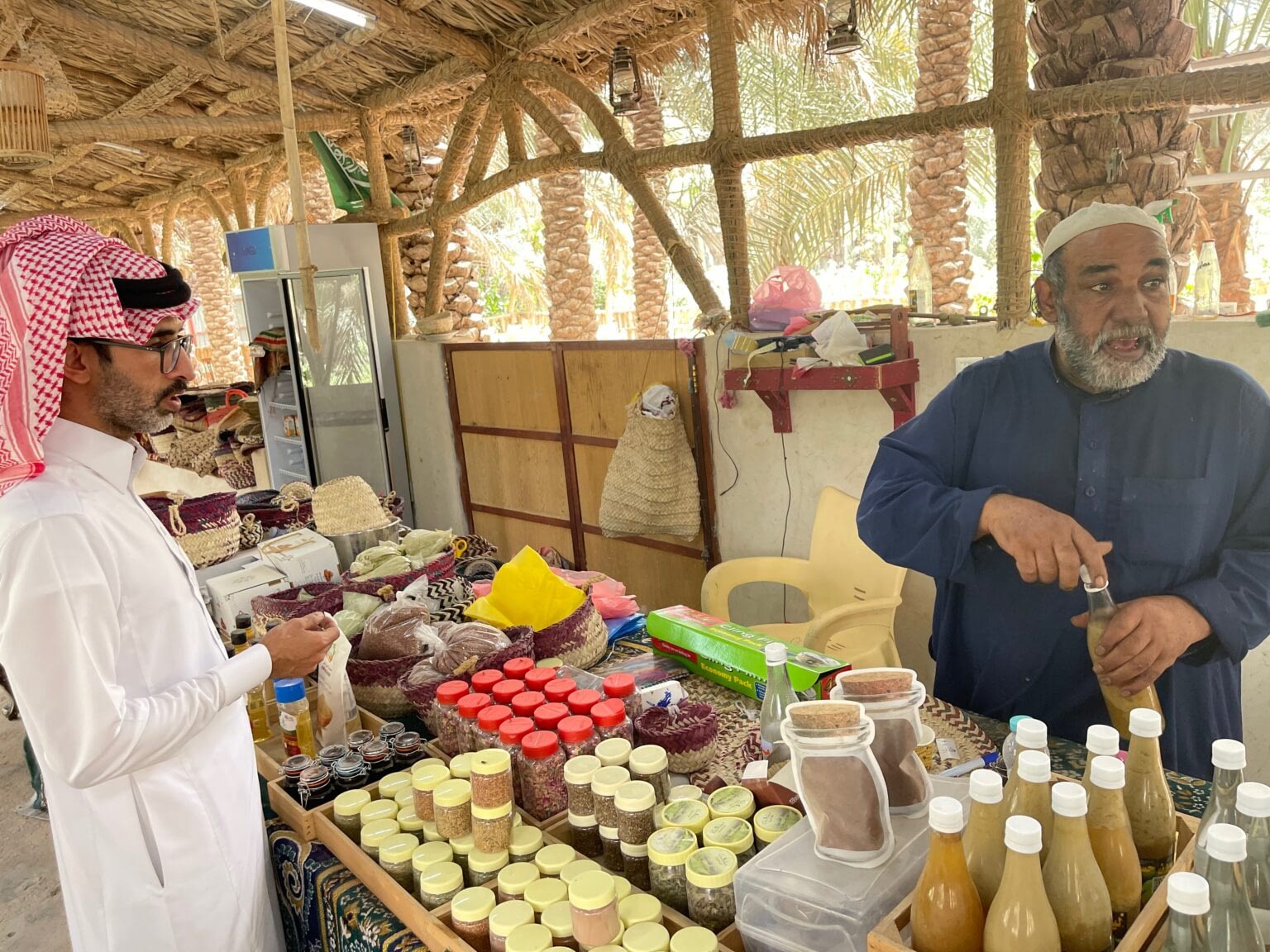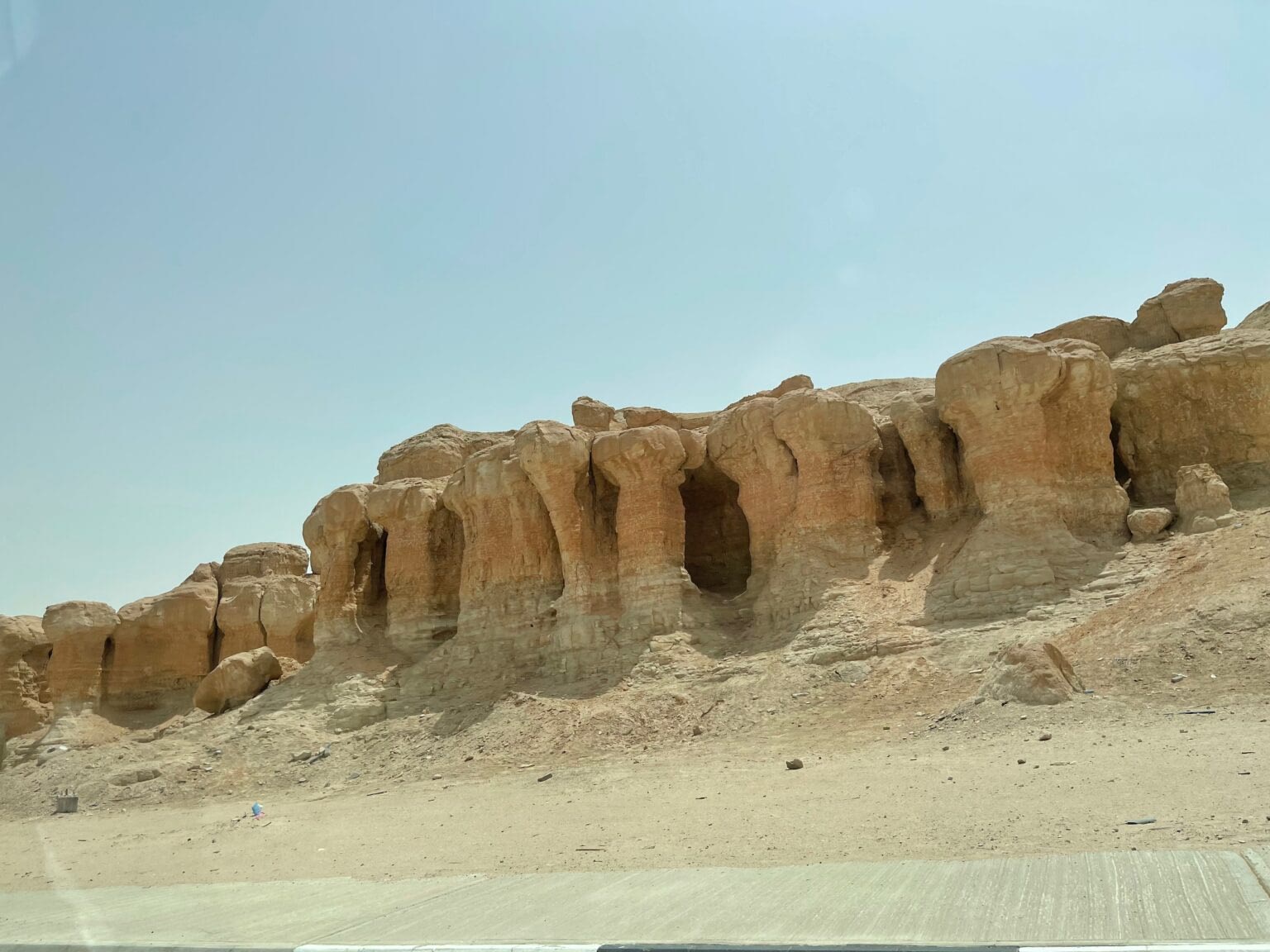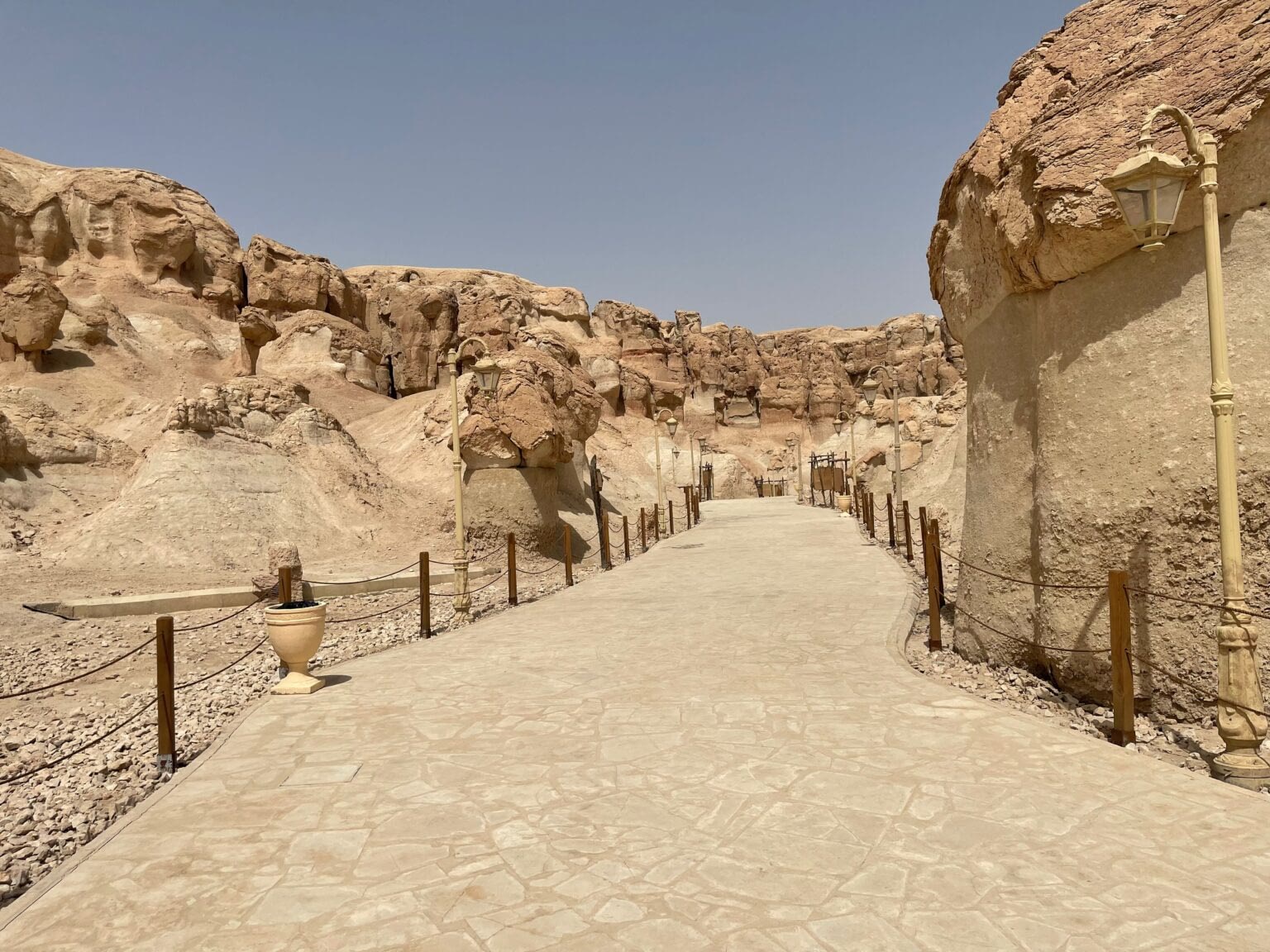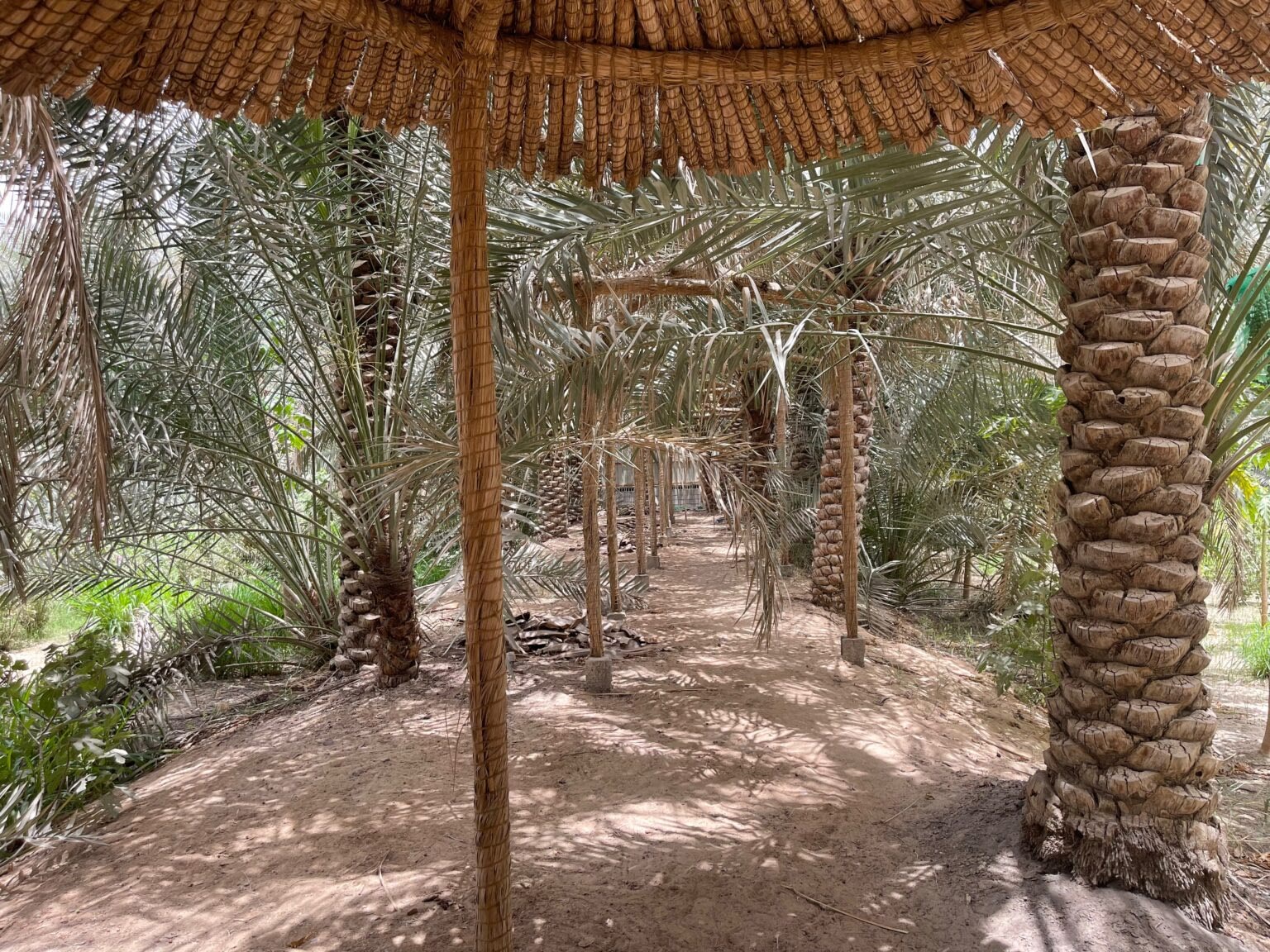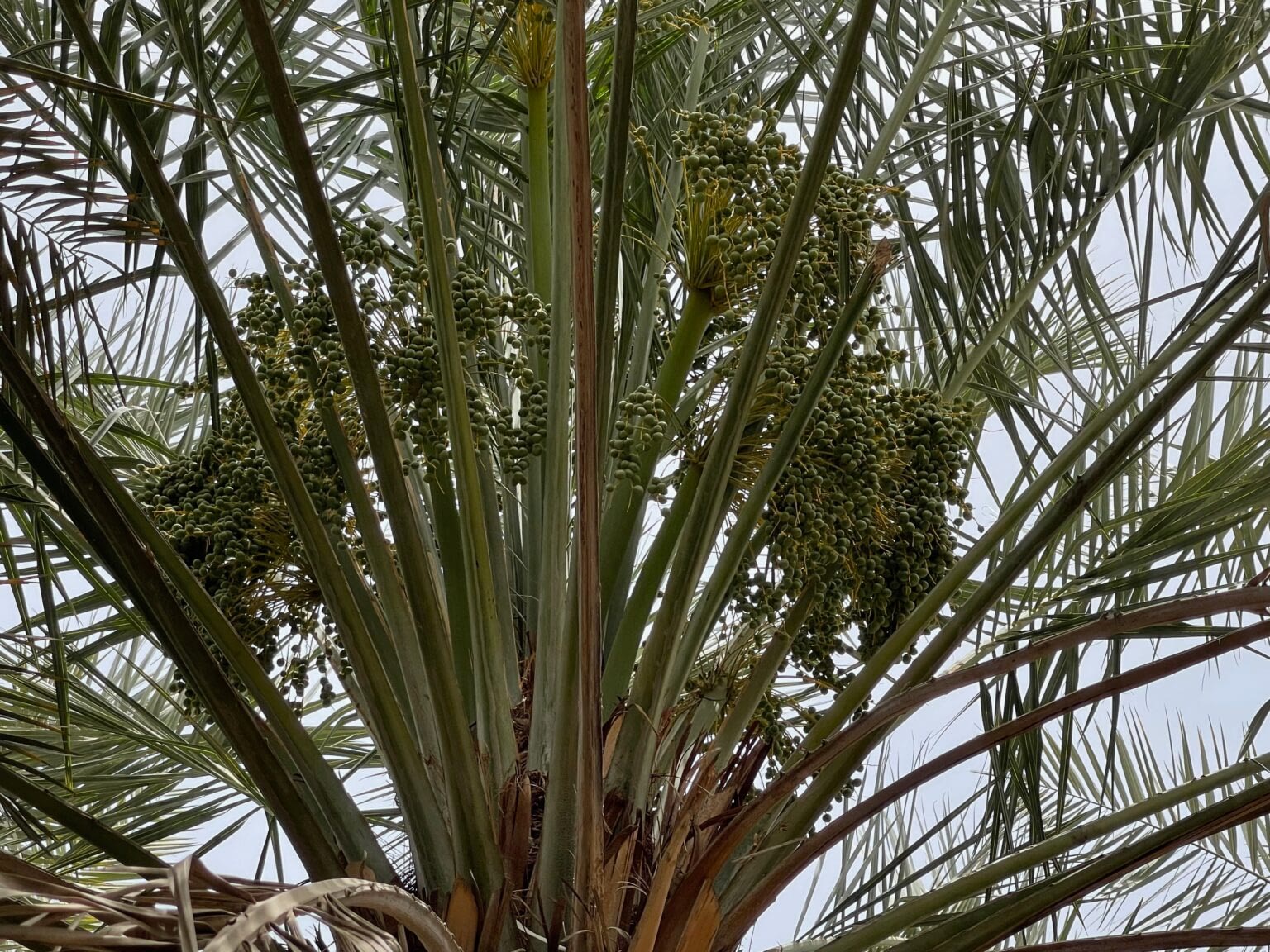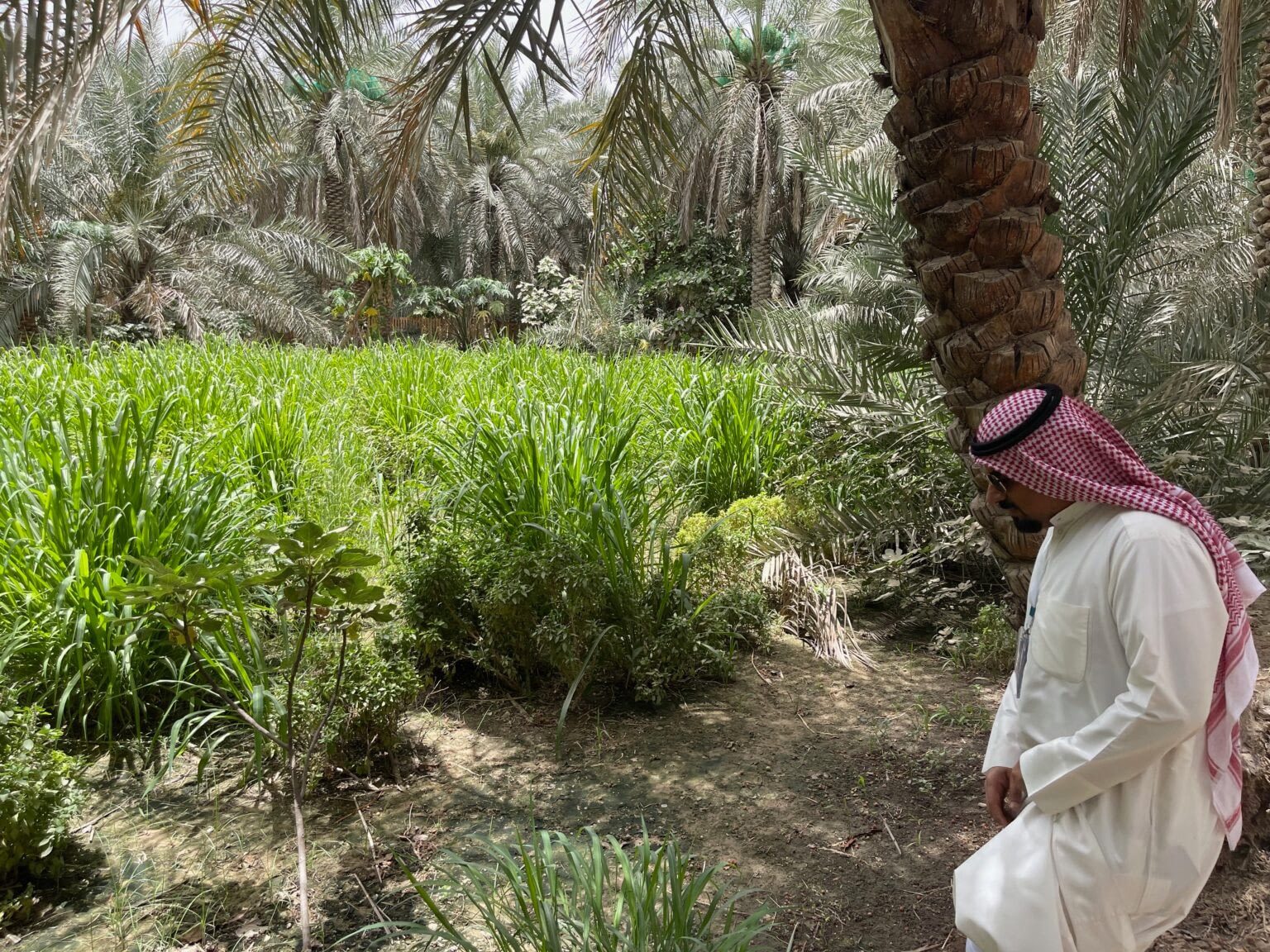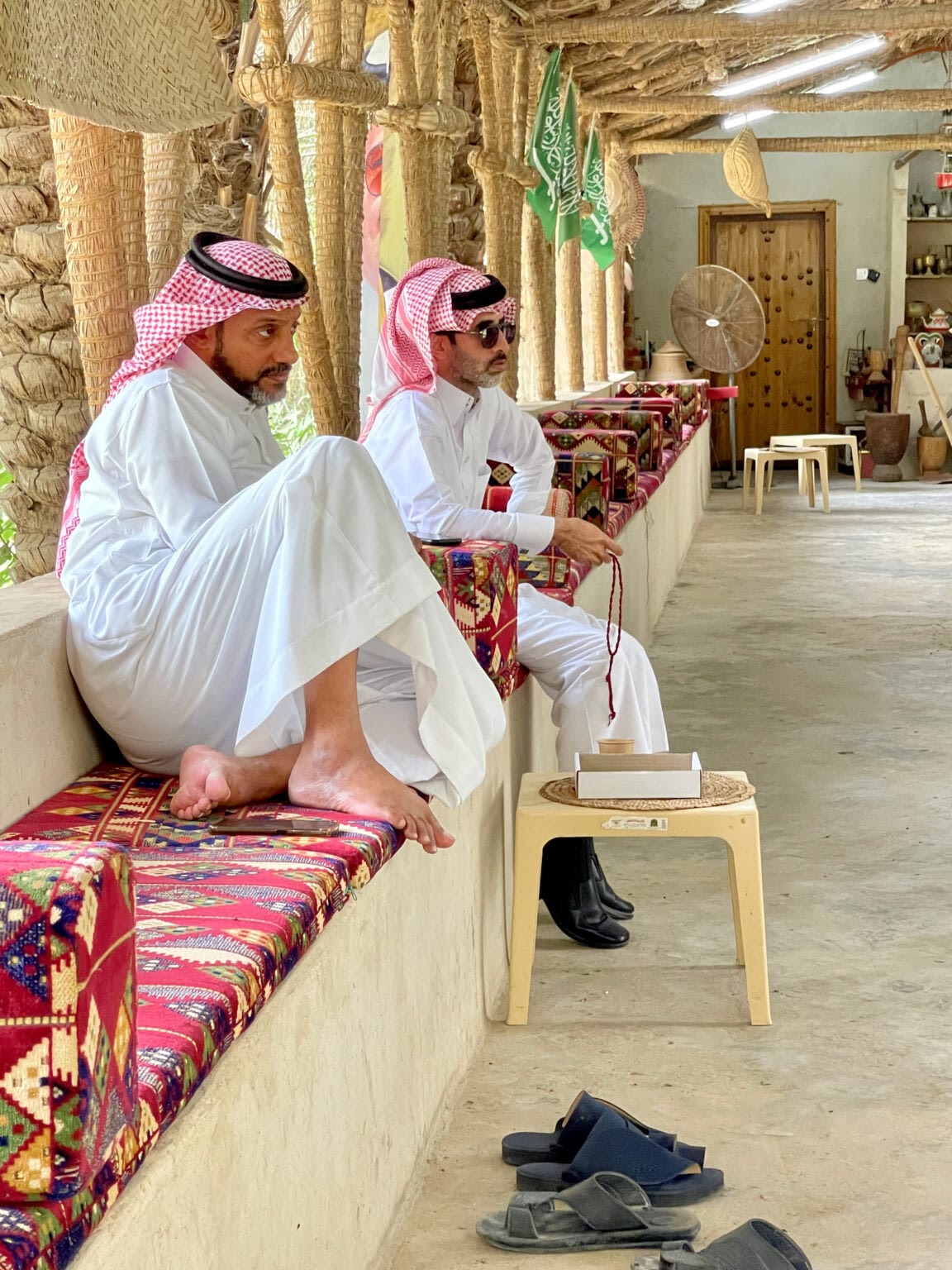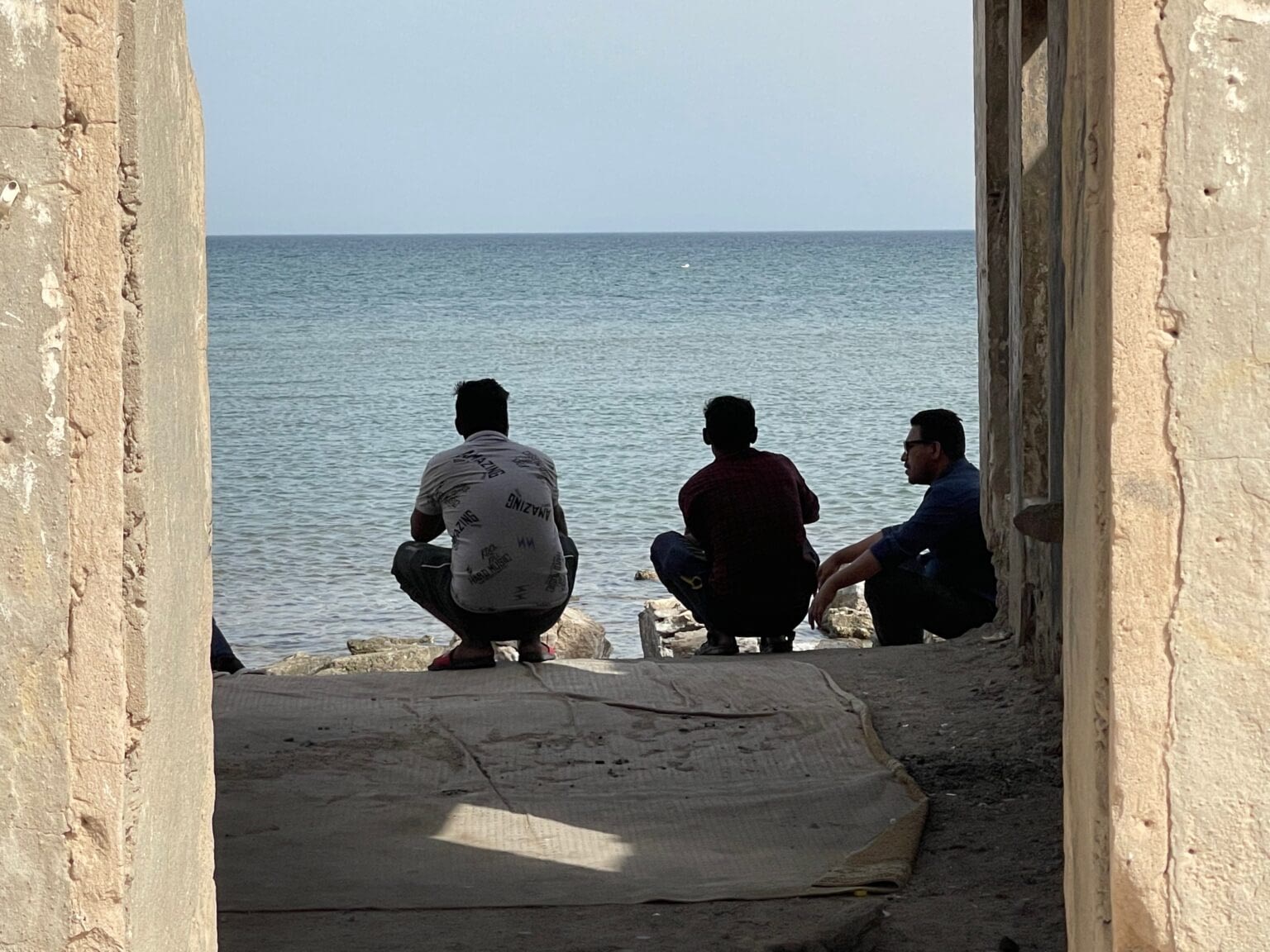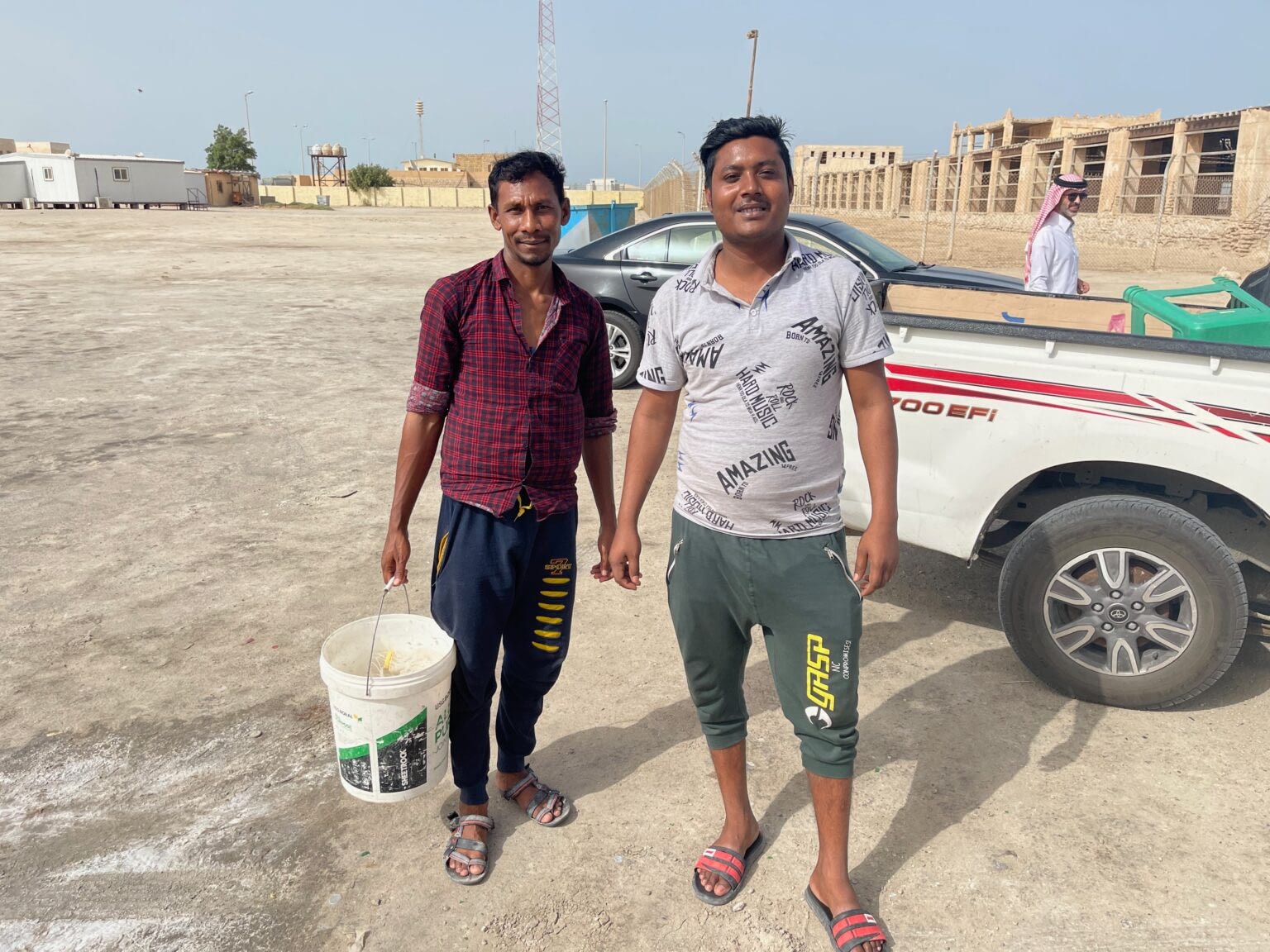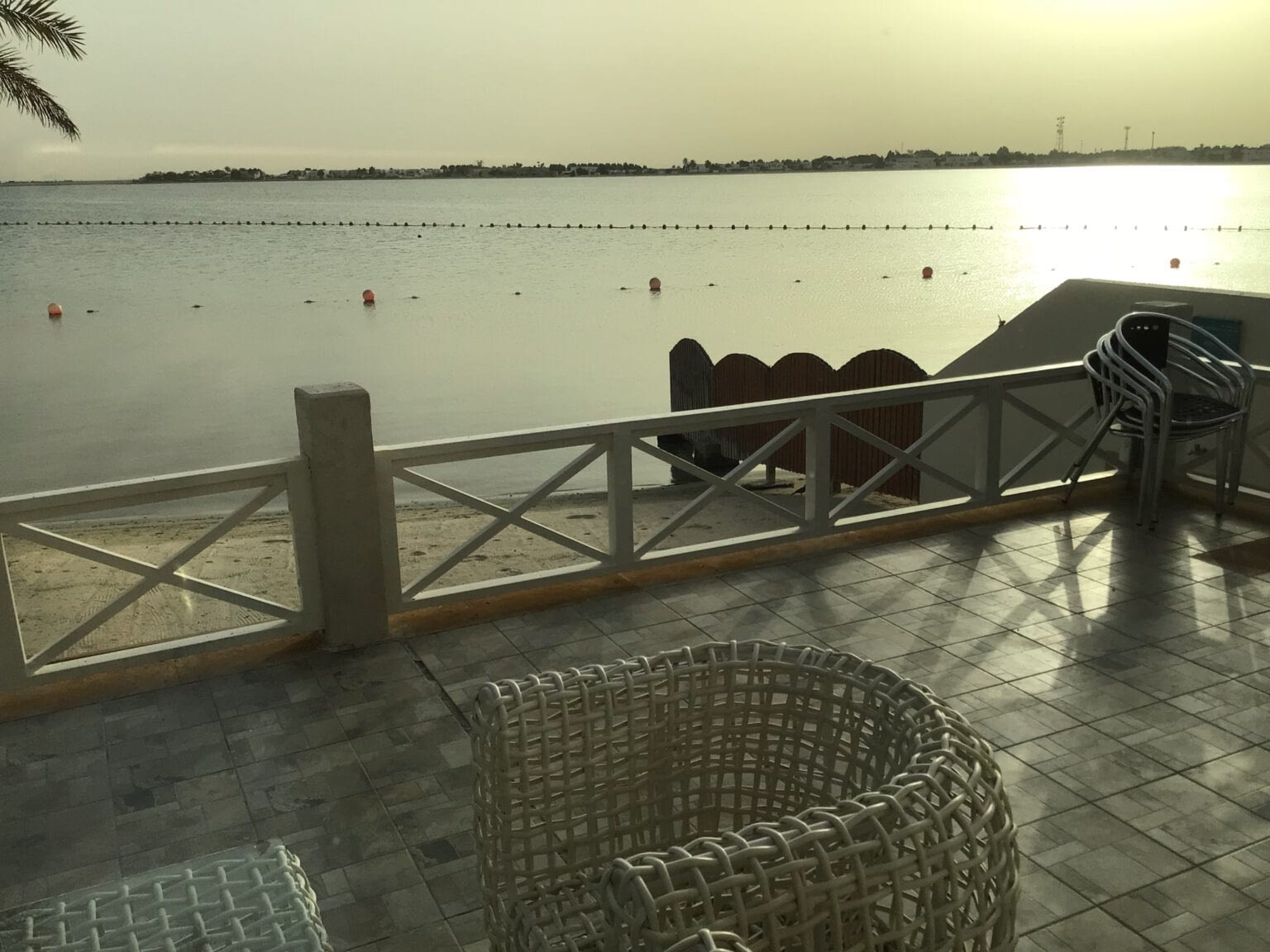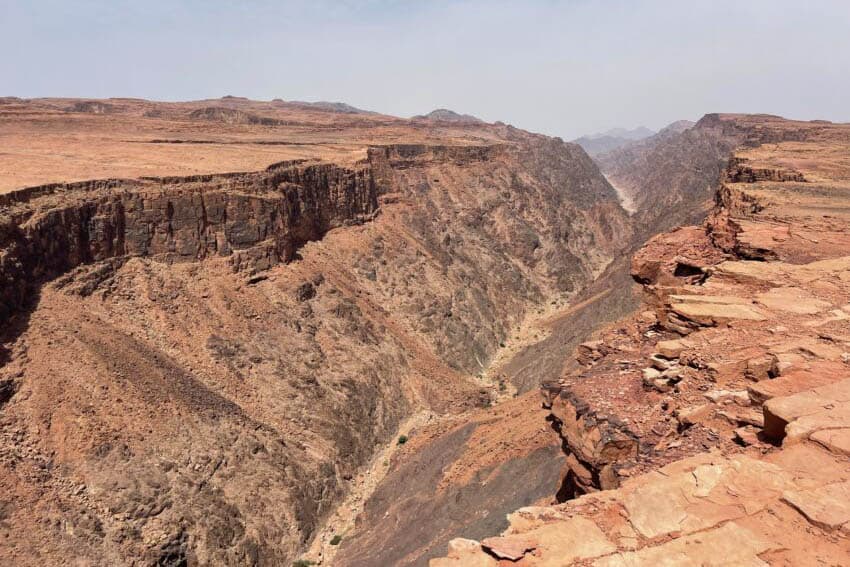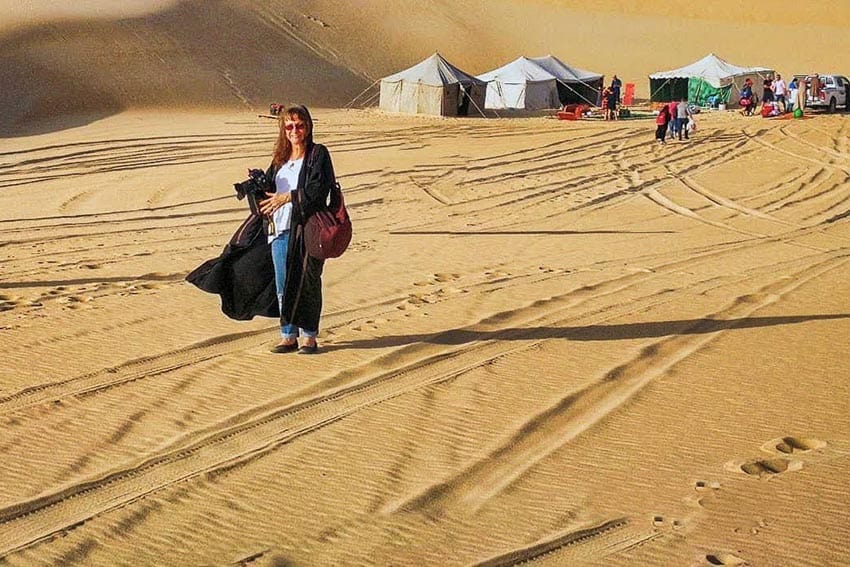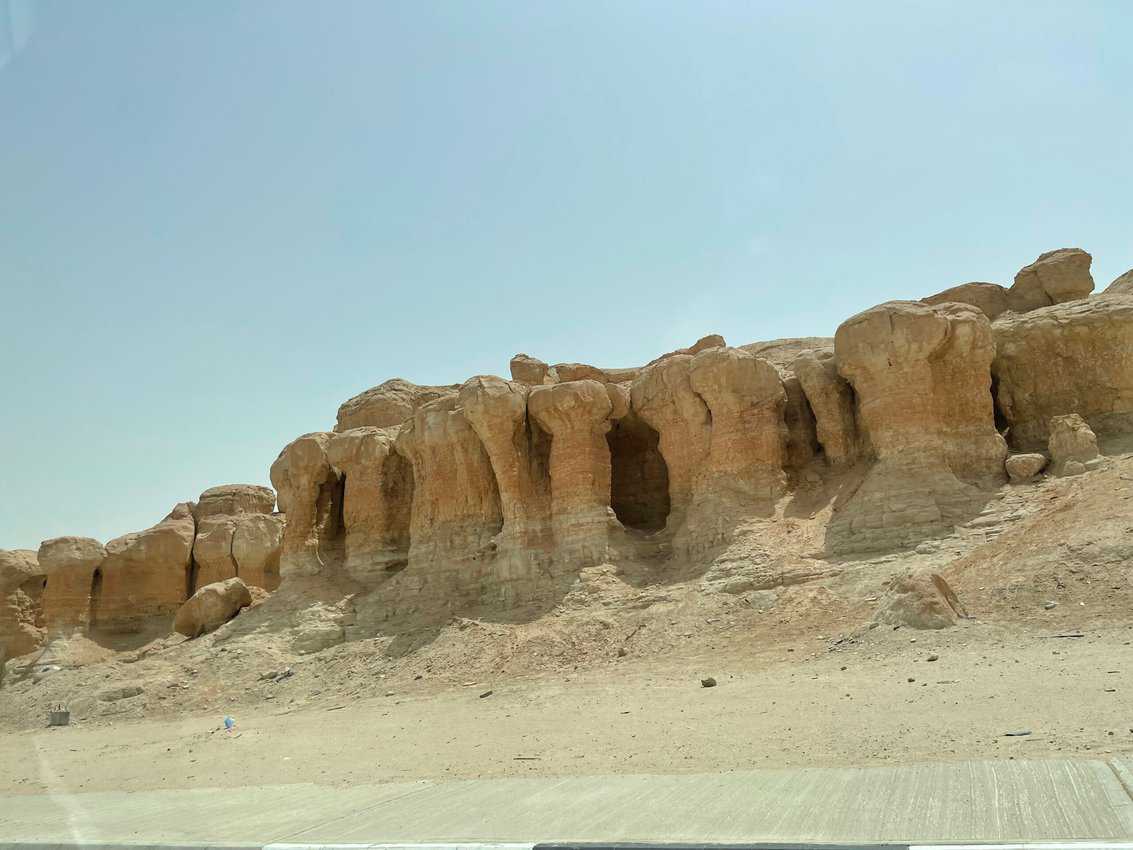
There is Much to Discover: Tabuk, Tayma and Al Hufuf
By Max Hartshorne
GoNOMAD Editor
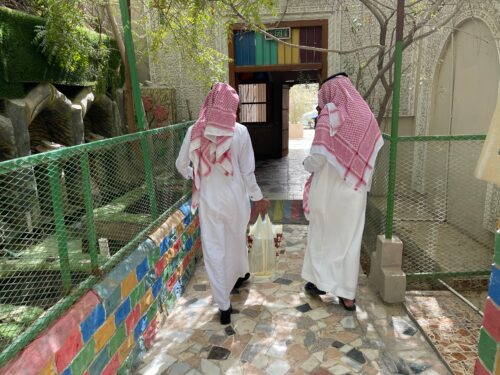
During a drive down a highway that shimmered with waves of heat I glanced at the thermometer on the dash…44, or 111 F.
Another typical afternoon in Al Hufuf, Saudi Arabia, with the temps at their normal sizzling range above 111 degrees.
Much of the life goes on here in the middle of the night, when it’s cooler. The brutal sun in Al-Hafuf, even in May, was relentless.
That’s why the airports are bustling full of people at four in the morning, and why at midnight you can walk a street in Tabuk and find many people out and about.
Our driver Mohammed pulled over to the side of the road and my guide waved to a man sitting on a bulldozer about 100 yards away.
Ali got out of the car into the afternoon heat with a large bag containing the leftovers from our traditional Saudi lunch including roasted camel, chicken, rice and hummus.
The man, with the dark face of one of the nations’ millions of Bangladeshi workers, smiled as he took the bag from my guide Ali.
He thanked him and ran back to the bulldozer and we sped off in the shimmering heat. It’s a Saudi tradition to give away food.
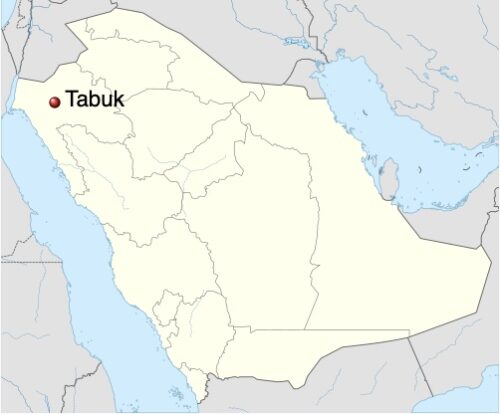 Tabuk, The Only City Near NEOM
Tabuk, The Only City Near NEOM
A visit to the city of Tabuk, the nearest city to the vast NEOM project in the north of Saudi Arabia, gave me a fascinating glimpse into the people’s lives here and their ancient Bedouin culture.
NEOM is going to be a gigantic new city, featuring a linear building more than 100 miles long and a vast assortment of industrial and tourism projects including a ski area.
As a 90-year-old country that only in recent years has opened to tourism, I had been wanting to experience the Kingdom of Saudi Arabia (KSA) for decades.
With the quick and easy visa process the Kingdom has introduced, I had my visa ready in less than 30 minutes. It cost $142, including mandatory travel insurance.
After a few days touring the northwest wilderness area the size of Belgium that will become NEOM, I met my guides and we set out to see what was in Tabuk and the vast brown desert area of the middle of the nation.
Tabuk has had remarkable growth. In 1950, the population was just 12,000 and today there are 667,000 residents.
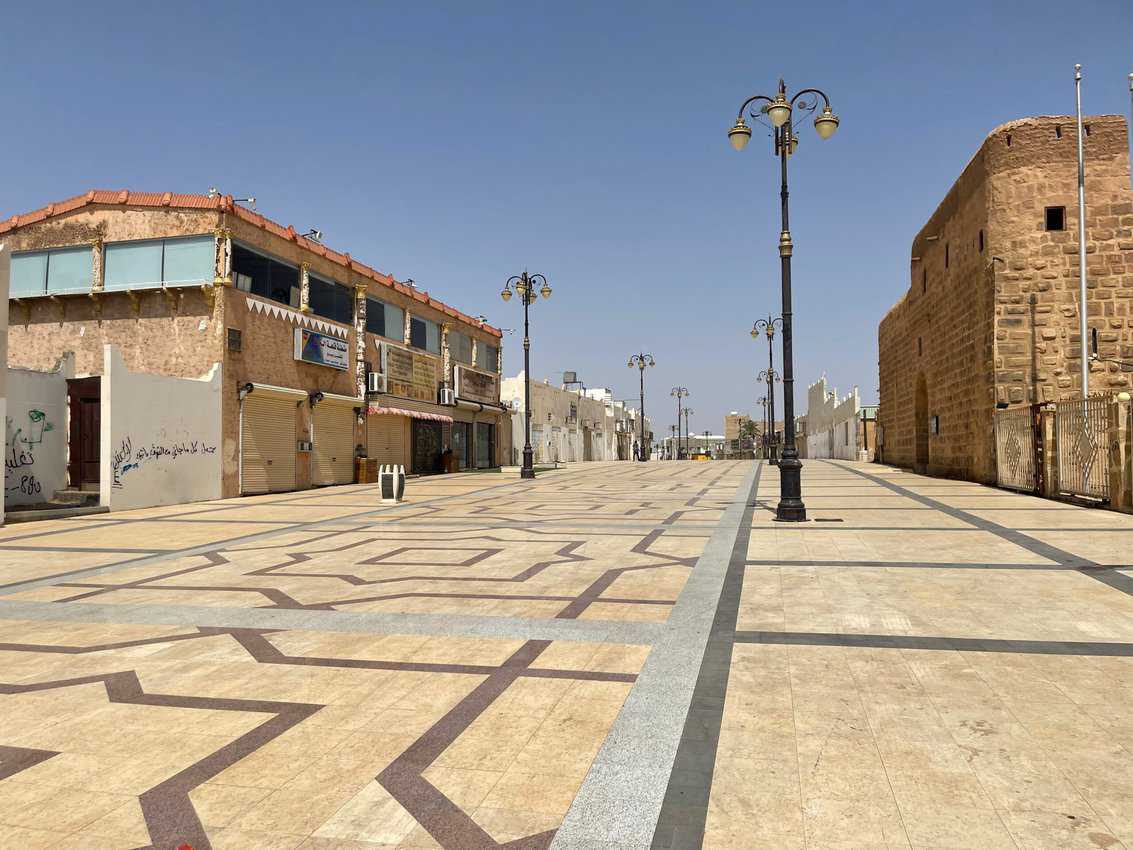

Tabuk is famous for two things: In the year 630 the prophet Mohammed once led a force of 30,000 men and drank from the spring, and in 1991, it was a center of the Gulf War and was threatened with Iraqi scud missiles.
The Tabuk Mall
One of the popular places for locals to hang out in Tabuk is the mall, which resembles most Western malls with large anchor stores, restaurants and boutiques.
But at this mall you can find dozens of different abayas, Ghutras, thobes and iqals, mixed in with the juice stands and pharmacy.
These items are the special red checkered headgear and white robes worn by most Saudi men and the black robes that cover the bodies and the chadors that cover faces of the women.
My guide Khalid Alharbi, a man with a great smile and quick wit, picked me up in the morning from the giant Grand Millenium Hotel, on the outskirts of the sprawling city.
One of our first stops would become a regular habit, the drive through Moroccan tea booths that are next to almost every gas station. These Moroccans really know how to make the perfect cup of mint tea, taken in a to-go cup on our journey.
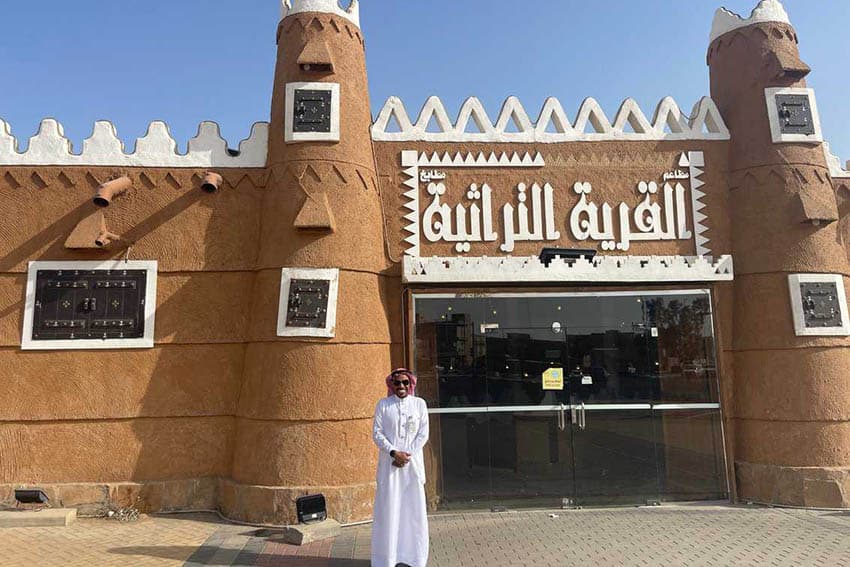
Dining in Saudi Arabia was pretty consistent, the offerings were similar in each of the three cities I visited. The most traditional restaurant was in downtown Tabuk, called Al-Qaryah Al Turathiyah. Here the booths were setup with floor seating, on carpets, with low walls forming the seating areas.
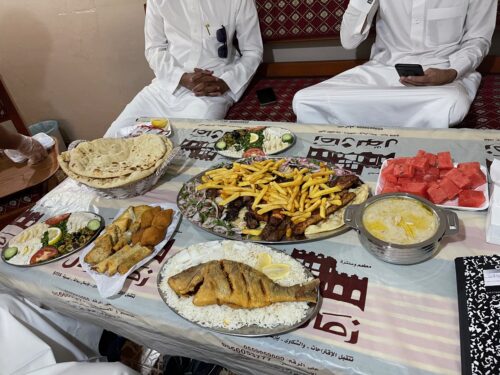
On the wall was a series of photos showing all of the Kings of the Kingdom over the years. It’s only been 90, and every king of the House of Saud was on display.
Big Circular Platters
A giant circular platter was set on the floor in front of us with mounds of camel meat, chicken, on top of rice and pasta. Side dishes were always hummus, pita and baba ganoush.
There is something very relaxing about eating this way, lounging on the low backed cushions and always taking plenty of time to enjoy the meal and sit for a while after.
A Visit to the Souk
The shopping in Saudi isn’t just at the big Western-style mall, it’s at the very narrow souks, marketplaces that are built inside narrow buildings and offer the most traditional of the clothing items preferred by Saudis, such as abayas, thobes, sandals and jewelry. They are famously open late.
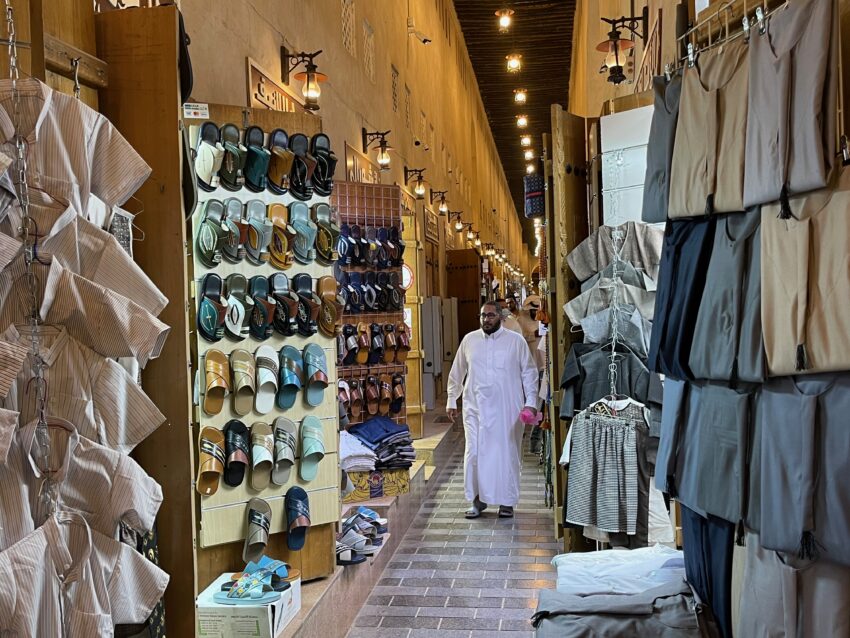
Another very Saudi tradition is to take a picnic and enjoy time sitting outside with friends and family. All over the cities we visited, people would sit down for picnics in front of the great Mosque in Tabuk, in the courtyard of the fortress in Riyadh, and along the highway rest areas.
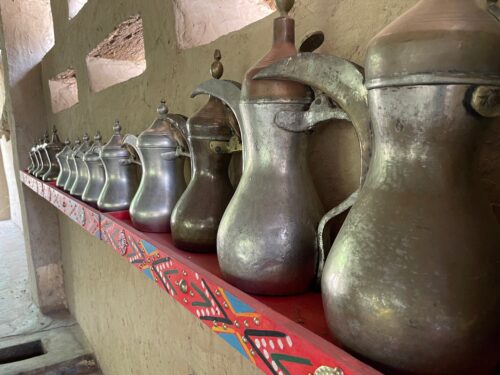 Tea would be heated up, and a full scale picnic would ensue. Tabuk has a big walking path that’s very popular with men and women lounging and children scooting around on mini electric bikes.
Tea would be heated up, and a full scale picnic would ensue. Tabuk has a big walking path that’s very popular with men and women lounging and children scooting around on mini electric bikes.
Tayma is located in the middle of the desert, and as you approach the city, there are giant painted decorations along the highway, along with the usual banners and photos praising the royal family and the past kings.
Photos of the Kings
This is evident in nearly any public places, the smiling visage of the ailing King Salman and his youthful son MBS, everywhere you see their photos and you see airports, streets and parks named after former kings and other members of the royal family.
In the city of Tayma, we got a chance to visit a Saudi family home and learn a bit about their life here. Tayma is an oasis city about 165 km southeast from Tabuk, it is located on a famous trade route used by ancient travelers through the Nefud desert.
Though the site of the green oasis is surprising, it is a common sight here and the cool shady oasis with the sound of water flowing was welcome as we left the hot sun outside. Dates grown on the farm were served with endless little cups of tea.
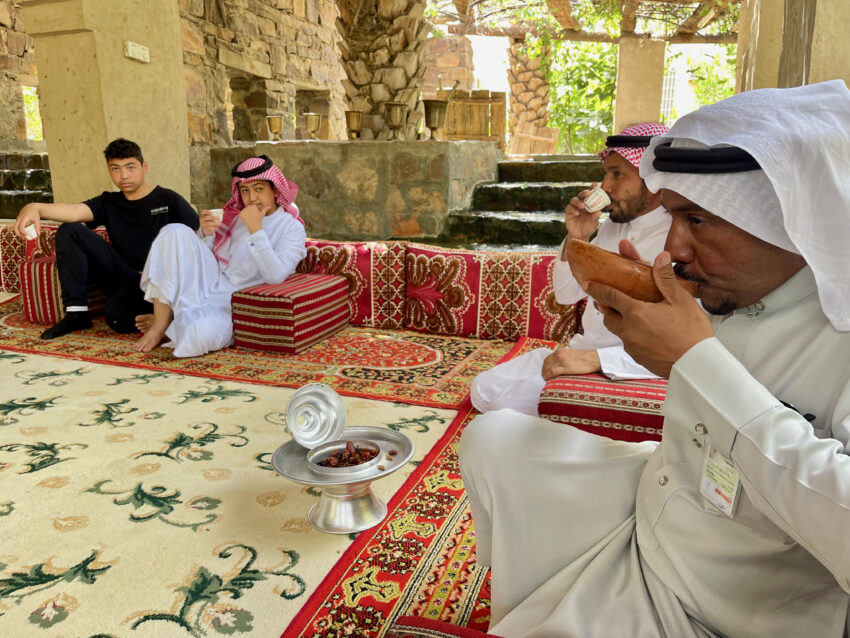
In Tayma there is an ancient site called the Haddaj water well surrounded by date palm trees. This is considered one of the most important water wells in the Arabian Peninsula, the Sheik (master) of all water wells, in fact.
Thousands of camel caravans drank at the 65 meter wide well, and it was used to irrigate nearby farmlands for centuries via 30 stone canals. The well has been restored many times over the years.
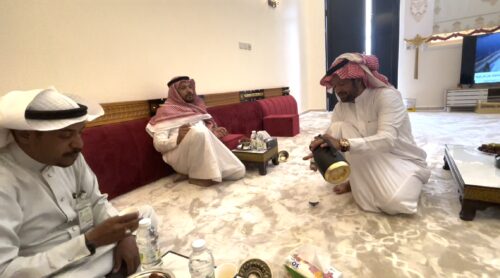
In Tayma, in the shimmering 111-degree heat, we toured ancient sites of the Governor’s Palace and another very ruined ancient site Qasr Al-Ablaq castle, and the Qasr Al-Hamra palace which was built in the 7th century BC.
No Tourists Here
Though these ancient sites were significant, what interested me was that there was not a soul here except for my guides and the locals who joined us to see them.
The family lunch was eye-opening. As we filed in all of the five men sat down at a table filled with large platters of roast chicken, camel, rice and many of the typical side dishes.
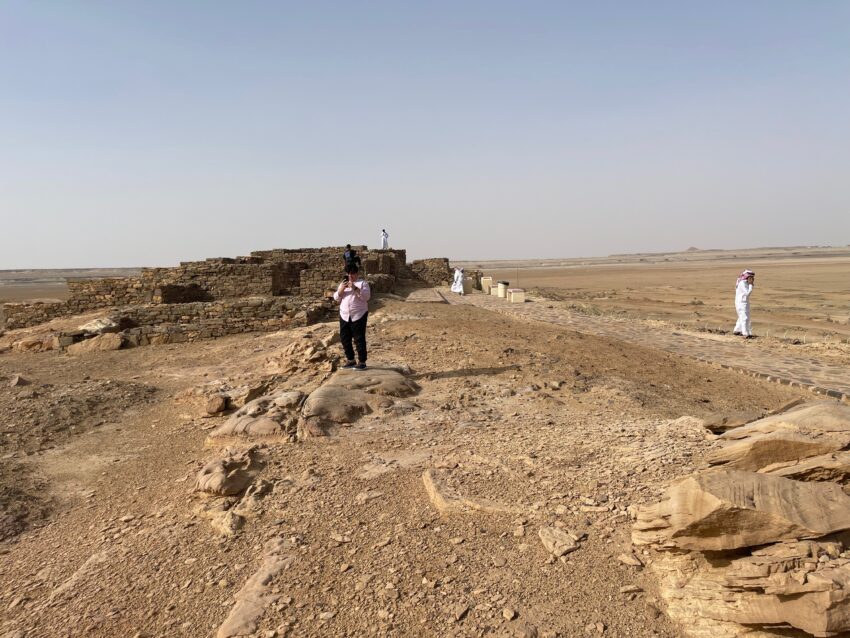
The two young teenage boys who had joined us at the ancient sites, didn’t join us for the meal.They ate by themselves after we had finished. After the boys I was told that it was the women’s turn to have lunch, they ate off the same big platters.
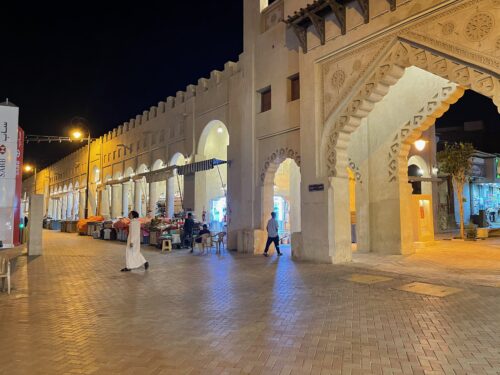
I asked my friendly host if he would show us the rest of his newly constructed house, that featured an elevator and separate entrances for men and women. I asked if I could meet his wife and he said, no.
“There is no reason for you to meet her,” he answered politely. My guide Khalid explained his reasoning: “Women here don’t want people to talk to them, that’s why they like wearing the chador and being covered.”
Al Hufuf, the City of Dates in Eastern Province
A few days later, I flew to the other side of the country to the fifth largest city, Dammam, the center of the country’s oil business and the fastest growing city in the country.
I had hoped to see the city but when my guides picked me up at the airport, we drove south instead of north to the desert oasis of Al Hufuf.
My lodging here would be at the Al Koot Heritage Hotel, which is set up with three stories all open in the middle with small rooms. It is adjacent to a very old historic mosque that was closed.

The city of about 858,000 is a date growing center and is considered one of the top cultural cities of Saudi Arabia–many famous families live here, the closest city to the largest oil wells in the nation.
No visit to the city is complete without visiting the souq, and this one like the others I visited, was dominated by men who run tiny shops off the very narrow passageway of the long white building.
If I needed a iqal to hold my ghutra, (the black fabric ring that holds the red checkered headress worn by Saudi men) I would be in luck. My guides stocked up on iqals as I tried on the headdress with a special gold-trimmed bisht, or outer covering.
A Shady Retreat
The next morning we headed out to see the impressive Al-Ahsa oasis, a large green spot on the parched brown earth of the desert.
Coming into this shady retreat we heard the sound of the sound of flowing water, we were greeted with tea and coffee and invited to sit on the low cushions in the classic Arab tradition.
Land of Civilizations in Al Mubarraz
There was another attraction that we would tour and it was a welcome respite in the fierce heat. It is called The Land of Civilizations, or Jabal al Qara in Al Mubarraz.
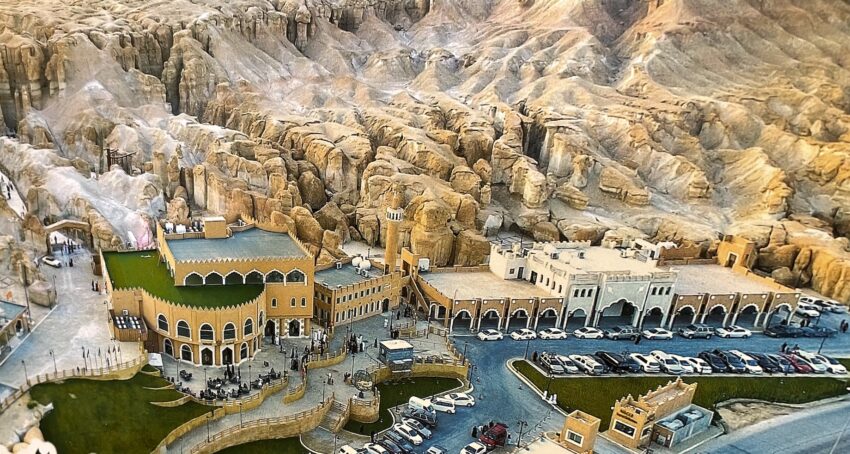
You walk inside a series of caves that are remarkably cool and see hanging stalagmites and information about past civilizations who inhabited this place.
Behind the cave are moon-like rock formations. The floors are polished and the feel of the cool cave is visceral. A group of boys played cards in the lobby they were some of the very few visitors we saw on our visit to this major KSA tourist attraction.
Everyone was remarkably warm and friendly and this was the case throughout the country whenever we would make a stop.
It was the best aspect of my trip, this uniform friendliness and simple grace of the welcoming people in Saudi Arabia.
This visit to KSA was sponsored by the Saudi Tourism board and NEOM, but the opinions are the author’s own.
- Exploring California’s Empty Central Coast - April 24, 2024
- Skiing in Georgia - February 21, 2024
- Exciting Rail Travel News in 2024 - February 4, 2024

